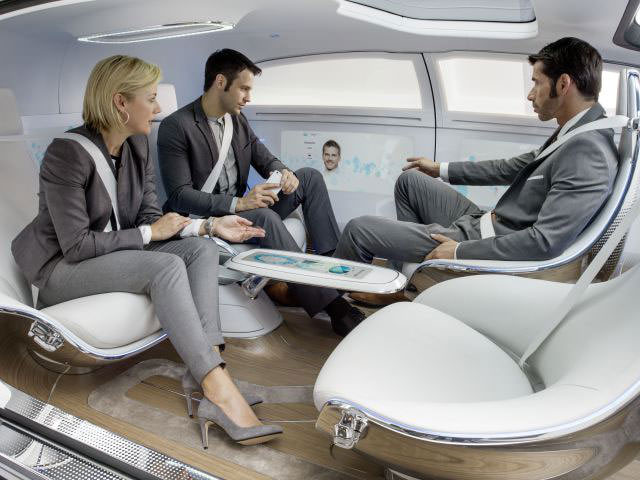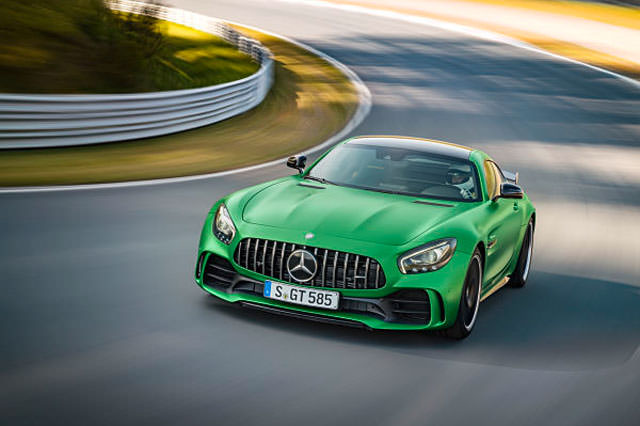The Future of Driving: Automated?

Many of my clients have been asking what I think about so-called automated driving. Even though I had followed developments in the industry for many years, I decided to give automated driving some serious study. What I see should concern us all, and has a direct influence on how we should approach vehicle selection going forward.
Let me first say that if we could all just wake up in 2030 or 2035, summon a car with a gesture—we wont be using smart phones for everything by then—have a “transport device” silently pull up, climb aboard and watch a movie while it safely conveys us to our office, ski resort of other destination, and never sit in a traffic jam again, I think we would all be very excited. But getting to this point will be fraught with a level of uncertainty and frustration that will make current traffic congestion a faint and fond memory.
The whole point of automated driving is to reduce the deaths that currently accompany driving. Roughly 30,000 people die annually from road-related incidents. Since most of these are based on lack of driving skill, it would seem the easiest way to reduce them would be to train drivers (like in Northern Europe); this would dramatically reduce deaths, and would require no changes in vehicles or infrastructure. But something in the American psyche refuses to think of driving as anything other than a right—not a privilege—and therefore we will never institute such a strategy. Instead we will begin the most comprehensive overhaul of our 300 million-plus car national fleet in history, and eventually make all the current cars out there obsolete.
A point of clarity: Right now there are no cars with automated driving systems; Tesla’s Autopilot, which is actually software from an Israeli company called Mobileye NV (and is used by BMW and many others) is currently Level 2 on a scale of 1-5, as defined by NHTSA. That acronym stands for the National Highway Traffic Safety Administration, the US government body that defines much about what, where and how we drive. This is important to know, as NHTSA’s head, Mark Rosekind, says we will follow the lead of countries like Sweden, which are focusing on reducing traffic-related deaths to zero by 2020 or as soon as possible thereafter.
[quote style=”boxed”] “Getting to this point will be fraught with a level of uncertainty and frustration that will make current traffic congestion a faint and fond memory.”[/quote]
Mobileye’s next suite of software, which will be much more capable, comes next year; the company says that by 2020 a true, fully automated configuration will be on sale.
To operate effectively, autonomous vehicles must interact with each other, called vehicle to vehicle or V2V, and the environment—part of the so-called Internet of Things that will let your refrigerator order milk before you run out, which will be delivered by a drone or automated van. Wide-area wireless networks, WiFi on street lamps and all sorts of other tech will allow cars to warn each other of accidents, or that a tire has blown, or that they have had a system failure—possibly caused by hacking—and therefore to avoid crashing into one another.
As we move towards this bright and shiny new future we need to understand how our current cars—and those we will purchase over the next five to 10 years—will fit. Right now there is no way to take a car designed and built without these automated systems and make it compatible. It would need to already have electric power steering, radar/lidar/laser sensors, automated emergency braking and lane departure correction software, at a minimum. You simply cant “back date” your great, much-loved 2014 car, truck or SUV to make it do these things.

So, how will the federal government get us out of these machines we have invested so much in? It appears that they will start, probably after 2020 or so, when we are projected to have between some hundreds of thousands to perhaps low millions of fully automated cars driving around, to dedicate some traffic lanes to only be used by automated cars, thus increasing congestion for those of us who don’t own—or want to own—these vehicles. They also plan to fight hard to increase the level of enforcement of traffic infractions to raise revenue (to pay for the changeover) and make the speed differential between human-piloted cars and automated ones (which will drive at exactly the speed limit, and turn, accelerate and brake slowly) lower. Since speed differential is the biggest factor—not speed—in accidents, this makes sense. Unless you like to actually drive, or get somewhere.
There’s precedent for this: HOV (High Occupancy Vehicle) lanes on highways are proven to actually increase both congestion and pollution, which are the two things they are designed to combat, but they exist everywhere anyway. Local municipalities have much to loose as well, as over half of their average budget comes from traffic violations. Expect them to charge fees to someone for the use of their roads and infrastructure. And to increase automated, camera-based enforcement.
The reality as I see it for driving in 2022 (or of we are lucky, maybe as late as 2027) would be heavy, automated enforcement of speed limits, even fewer lanes to use for non- or partially-automated vehicles, and rolling chicanes in the form of automated vehicles, which will gently delivery their cargo of humans—including drivers who will still have to keep their hands on the wheel every few seconds and be ready to take over if there’s a system problem—about urban landscapes. I hope I am wrong.
In the meantime, it is important to think hard about what vehicles you will get as we transition; every senior car company person I know says cars and driving will change more in the next 10 years than in the last 100. I certainly wouldn’t think we’ll be able to keep cars on the road in urban settings 11-12 years (the average age of vehicles right now); perhaps some of these could end up in more rural environments, such as ski towns or farms. But for most of us, it will be a radical rethink of purchase habits.
Here is my advise, in two parts. First, look at used vehicles, as the depreciation curve is typically shallower than new. And, if you are thinking of a new vehicle, lease it, don’t buy. This way, if the pace of change leaves it behind, it becomes the car company’s problem to dispose of at lease end. Next, pay attention to who is running for office locally and what they have to say about this driving future, which is more important to most of our daily lives than many other things that will make the news.
As a final thought, those of us who truly love driving and performance cars must really think about how we will continue to pursue our passion. I think we will end up with a world where we go to driving “resorts” comprised of race tracks and other such places to safely enjoy the amazing potential of both machines and their human pilots, just as most of us do now when we want to ski, shoot or engage in other activities that cant really be engaged in otherwise. To get there and back we will turn over control to an automated vehicle. How ironic.

Isaac Bouchard is owner of Bespoke Autos, an auto brokerage that helps people save time, money and hassle when buying or leasing vehicles. Since 1991 he has helped his clients save over $1 million dollars. He has written extensively about getting the best deal possible when buying or leasing a vehicle, arranging financing or trading in a car. Isaac has been a professional automotive journalist as well for over 12 years, having reviewed most all types of car, truck and SUV.
Visit our Nice Drives section for more car reviews and comparisons.
Colorado AvidGolfer is the state’s leading resource for golf and the lifestyle that surrounds it. It publishes eight issues annually and proudly delivers daily content via www.coloradoavidgolfer.com. Follow us on Twitter, Facebook and Instagram.

